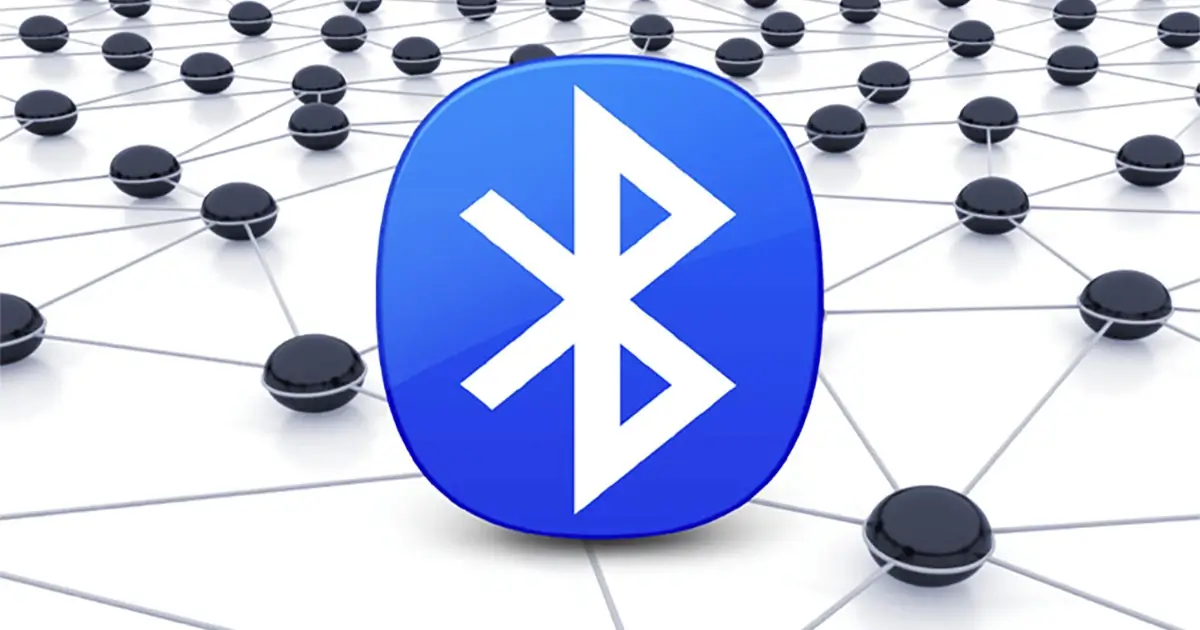In the context of Bluetooth 4.0, BLE Mesh was released in V1.0 in July 2017. BLE stands for “Bluetooth Low Energy” and Mesh refers to the technical protocol part. Different from the Bluetooth version 1.0-3.0 (commonly called BR/EDR Classic Bluetooth) released in early 2000, BR/EDR is a typical “point-to-point” communication method, which is mainly used for short-range wired data transmission, but there is a power higher question. Compared to that, BLE Mesh has more potential…
Introduction to BLE Mesh Technology
Bluetooth has been regarded as a wireless communication technology, and Bluetooth technology is one of the most common wireless communication technologies in the world. From 2000 to the present, Bluetooth technology has been widely used in billions of devices. In 2016, manufacturers shipped more than 3 billion Bluetooth devices.
Integrated into almost every mobile phone and personal computer. As an earlier communication technology, it attracted worldwide attention once it was introduced, and has been named one of the “Top Ten Hot Technologies in Ten Years” by the United States “Network Computing” magazine. From the one-to-one transmission mechanism introduced at the beginning to the introduction of Bluetooth low energy, to the one-to-many broadcast (beacon) mechanism, Bluetooth has been perfecting its technology in order to meet increasingly diverse application scenarios and adapt to market demand, and the Bluetooth Mesh introduced last year is further enriching its usage scenarios, and large-scale applications maybe next year.
the Birth of Mesh
Bluetooth Mesh was born out of CSR Mesh, a private protocol advocated by CSR. This technology was born in 2014.
The Bluetooth Technology Alliance officially announced on July 19, 2017, that Bluetooth technology has started to fully support Mesh networks. The new Mesh function provides many-to-many transmission between devices and especially improves the communication ability to build a wide range of network coverage. It is suitable for building automation, wireless sensor networks, etc. IoT solutions.
In 2015, Qualcomm acquired the owner of the Bluetooth Mesh protocol, CSR, and began to promote and deploy smart home devices on low-power processors.
The BLE Mesh network is a new network topology for establishing low-energy BLE (Bluetooth Low Energy, also known as Bluetooth LE) for many-to-many device communication. Allows the creation of large networks based on multiple devices. The network can contain dozens, hundreds, or even thousands of BLE Mesh devices. These devices can communicate with each other.

Bluetooth Technology Alliance
The Bluetooth Technology Alliance is a multinational organization that develops Bluetooth specifications and promotes Bluetooth technology. It owns the Bluetooth trademark and is responsible for certifying manufacturers and authorizing them to use Bluetooth technology and the Bluetooth logo, but it is not responsible for the design, production and sale of Bluetooth devices.
On July 19, 2017, the Bluetooth Technology Alliance officially announced that Bluetooth technology began to fully support Mesh networks. The new Mesh function provides many-to-many device transmission and especially improves the communication efficiency of building a wide range of network coverage. It is suitable for building automation, wireless sensor networks, and other things that require tens of thousands of devices to transmit in a reliable and secure environment.

Bluetooth Mesh Compatibility
The Bluetooth Mesh network runs on Bluetooth low energy and is forward compatible with Bluetooth 4.0 and above. Therefore, existing Bluetooth low energy products on the market may be upgraded to have Bluetooth Mesh function through firmware upgrades (especially OTA). Products, but whether it has the possibility of upgrading, it is necessary to consider multiple factors, such as the capacity of ROM and RAM, whether it has the function of OTA upgrade, and whether the processing capacity of the MCU meets Provisioning’s computing requirements for asymmetric encryption.
Bluetooth Mesh Specification
Like the Bluetooth core specification, Bluetooth Mesh also has its own specification document, which functions similarly to the Bluetooth core specification and defines the technical details related to Bluetooth Mesh in detail.
Bluetooth Mesh Glossary
Since the concept of Mesh is a very new field for Bluetooth technology, there are many new technical terms in the Bluetooth Mesh specification. Regarding these new terms, the Bluetooth Technology Alliance has already prepared and established a special guidance website. The Bluetooth Mesh vocabulary can reach 32,767 nodes.

Bluetooth Mesh Technology Features
Bluetooth Mesh is based on core spec 4.0. It strictly follows the requirements of industrial-grade reliability, scalability, and security from the beginning of design. It brings together low power consumption and supports mobile phone/tablet direct connection, interoperability, etc. Features.
Bluetooth Mesh can support up to tens of thousands of nodes in a single network. It uses a controlled flooding (network flooding) method to forward information from one node in the network to the destination node. No need to create and manage complex routing tables. Due to its broadcast nature, any single point in the network fails, and messages can be transmitted to destination nodes through other paths, ensuring the robustness of the network.
Low Power Consumption
Low power consumption is a great advantage of Bluetooth technology, and this advantage is also inherited in Bluetooth Mesh technology. There is a type of node in the Bluetooth Mesh network that supports the Low Power Feature, which can also be called a low-power node. This type of node can achieve low power consumption by reducing the duty cycle of the RF transceiver, which means that this type of node will only turn on the RF transceiver when it needs to send and receive messages.
Friendship Node
There is another type of node in the Bluetooth Mesh network that is dedicated to serving low-power nodes. It has the friend feature and can also be called a “Friend Node”. Friend nodes can establish friendship relationships with low-power nodes. After establishing such a relationship, the friend node can temporarily store the information sent to the low-power node, and then retrieve the relevant information from the friend node after the low-power node exits the sleep mode.
In practical applications, Friend nodes can be light bulbs, set-top boxes, and routers. These devices are powered by mains power and are not very sensitive to power consumption. Low-power nodes can be battery-powered devices such as sensors, door locks, etc.

About Security
The Bluetooth Mesh network is a true industrial-grade solution that uses proven security algorithms to provision devices added to the network. All communication information needs to be encrypted and authenticated by using 128-bit AES-CCM. All messages in the Bluetooth Mesh network need to be encrypted and authenticated. Encryption and authentication are applied to both the network layer and the application layer, there are two sets of keys and so on.
Bluetooth Mesh Product Certification
The first products to be certified are lower-level enabling technology products, such as Bluetooth software stacks and modules with Mesh networking capabilities. They come from mainstream Bluetooth stack and module vendors, including Shengke Electronics, Cypress, Crystal, Zhongyi Tenda, Content, MindTree, Nordic Semiconductor, Silicon Labs, Silvair, Tailing Microelectronics, Toshiba, Xiaomi and Qualcomm Wait.
The number of new products is also growing rapidly.
Four Advantages of Bluetooth Mesh Over Other Mesh Networks
- It can provide inter-brand interoperability across the world, and products from different brands can work together smoothly.
- Supporting smartphone direct connection, deploying a Bluetooth Mesh network requires a process of turning the device into a node, which is provisioning. This process only needs to use the smartphone as the manager’s role, and authorized devices can connect to the Mesh network, which is very simple and flexible while ensuring the security of the Bluetooth Mesh network.
- Lower power consumption. Bluetooth Mesh inherits the characteristics of low-power Bluetooth low power. In Bluetooth Mesh, there are two types of device characteristics: one is a friend node and the other is a low-power node, which can guarantee the low-power performance of the node, which is better than Zigbee and other protocols with low power consumption.
- The cost of the Bluetooth module is low. Although the cost of various protocol modules such as Zigbee modules and Wi-Fi modules is decreasing, the average cost of Bluetooth modules is relatively low.
Development Dilemma of Bluetooth Mesh
Bluetooth Mesh has just been launched, and it will take some time for the public to accept it. Like Bluetooth low energy, it also experienced a 2-year incubation period before it broke out. Therefore, Bluetooth Mesh should only erupt in 2019. Secondly, Bluetooth Mesh is a new technology after all. There are still many things that need to be improved in the current version 1.0 specification, such as how to upgrade the Bluetooth Mesh-based firmware (DFU). Implementation, how to achieve a remote distribution network, and so on.
At present, the development of Bluetooth Mesh is still relatively difficult. The difficulty of development is firstly reflected by the incomplete functions of the Bluetooth Mesh protocol stack on the market, such as low-power nodes and friend nodes in Bluetooth Mesh. In addition, Bluetooth Mesh has a very good feature: Mesh distribution and deployment are completed through mobile phones, but most manufacturers currently do not launch corresponding distribution network apps and corresponding libraries. When the Bluetooth Mesh framework technology is not ready, it is difficult for application developers to develop Bluetooth Mesh applications. Therefore, there is no large-scale commercial case for Bluetooth Mesh.
Few developers are familiar with the Bluetooth protocol stack. For them, it takes time to be familiar with the Bluetooth SDK tools. There is no doubt that this has seriously slowed down the time to market and thus caused enterprises to lose the best opportunity to occupy the market. Products that support both Bluetooth 5 and Bluetooth Mesh simultaneously enable designers to build products with a Bluetooth 5-certified protocol stack with more confidence.
BLE Mesh Application Scenario
Bluetooth Mesh is mainly used in building automation, wireless sensor networks and material tracking. Since the release of Bluetooth Mesh technology, Mesh technology has been tested and applied in intelligent solutions in the fields of connected cars, lighting and education.
- Lighting applications. At present, the light bulb may become one of the most important Mesh network devices in the home, because almost every corner of each home or building needs to be covered by light, and the light bulb is generally installed continuously at a certain distance so that users can control family equipment. Moreover, the Bluetooth Mesh network has industrial-grade security protection and global interoperability. Whether it is a Bluetooth 4.0, 4.1 or 4.2 device, you can directly obtain the “many-to-many” connection function by installing a Bluetooth Mesh.
- Smart home applications. Alibaba Artificial Intelligence Lab released the IoTConnect protocol based on Bluetooth mesh at the US CES in January 2018. The Bluetooth Mesh solution of Ali + MTK has been applied to the smart speaker Tmall Genie.
- The Internet of Vehicles. At present, relevant Bluetooth Mesh solutions are being tested on the Internet of Vehicles. In the Internet of Vehicles, there are thousands of sensors on a car, and a gateway needs to collect data from these sensors. In addition, vehicle-to-vehicle communication was previously mainly achieved through communication networks, such as 3G/4G.
- Educational applications. In addition to multi-point connections, Mesh technology can also cover corner positions, which can effectively cover educational equipment.
- Application in other fields. BLE Mesh can also be applied to many fields such as nursing homes, medical care, sports health, and industrial automation, etc.
Bluetooth Mesh is a software-level solution that runs on Bluetooth low energy and is forward compatible with Bluetooth 4.0 and above. Therefore, existing Bluetooth low-energy products on the market may be upgraded by firmware (especially OTA) way to upgrade to become Bluetooth Mesh-enabled products. So its speed of production will be faster than Bluetooth 5.
All in all, Bluetooth Mesh technology may not subvert the smart home, but at the application level, Bluetooth currently has the highest penetration rate and the highest standardization level, which is enough to open a new situation of Internet of Things interconnection and drive Bluetooth headsets, Bluetooth speakers, wearable, the smart home and other application markets have exploded again, driving the diversification of IoT scenarios.


